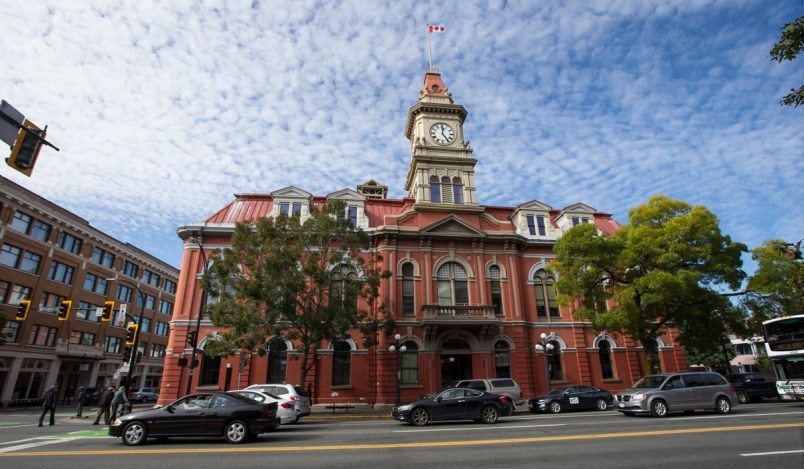There’s something unsettling about politicians suggesting a pay increase of 55 per cent for themselves. When it follows a checkered job performance during the first 18 months of this term, it is closer to stunning.
Residents of Victoria predictably reacted with fury, the issue dominating civic and media discourse for weeks. The kerfuffle comes at the expense of other issues such as the scrutiny of the city’s proposed $300-million consolidated budget for 2020.
The pay issue also hit the fan in 2015 when Capital Regional District directors — several of those directors sit on council — voted themselves a 100 per cent increase shortly after taking office.
Unless governance is changed to address the pay issue, there will be more dust-ups.
In our view, council salaries need to be brought in line with the median total individual income of their employers and citizens they serve — in this case, the taxpayers of Victoria.
Councillors are paid $46,492, compared with the median total income of $40,500 in the Victoria CMA in 2017. Even allowing for inflation of five per cent the past couple of years, salaries still exceed the average resident. Arguably, a five per cent pay cut is merited.
By virtue of their role as councillors, three councillors also earn as much as $20,000 (a third for expenses) by sitting on the CRD, earn meeting stipends for just showing up and top-ups for committee responsibilities.
Others have paying roles outside council, such as the Greater Victoria Harbour Authority. Last year, 1.3 per cent of the corporation’s gross revenues, or $187,000, was paid out to the 13-person board.
At our urging, council just created a Council Remuneration and Expenses webpage so taxpayers easily get a more complete picture.
By even talking about a $25,000 windfall, councillors have discredited themselves and the office they hold. It’s dissuaded others — given the strong emotion around the issue — from even aspiring to holding political office.
This latest controversy (in a long list) has Saanich residents scratching their heads and wary about the possibility of amalgamating with Victoria. Maybe poisoning the well around amalgamation is the real agenda at play by opponents.
So, how do we avoid the next inevitable salary dust-up?
The Union of B.C. Municipalities recognizes the toxic nature of this perennial issue, and in September 2019 published a 44-page Council and Board Remuneration Guide. Victoria council members might want to read it.
The report discusses 15 sensible best practices — from setting up an independent task force to frequency of reviews — to guide municipalities. There’s no mention of sending up a trial balloon to survey taxpayers if they support a huge raise.
Some taxpayers think the entire task of salaries should be handed over to the province for regulation.
A salary and benefit formula could be established with variance for the size of the jurisdiction. If it’s a municipality of 92,000, for example, there is set pay, benefits and annual cost of living increase. End of discussion.
But another provincial intrusion into local government would be opposed bitterly. The province has little to gain by intruding into another dysfunctional area on top of stepping into regional growth strategy and transportation issues.
Council calls for a major pay hike usually revolve around finding solutions to claims of an excessive workload.
Moving to evening meetings or hiring an outside management firm to study workflow has been suggested. Some taxpayers believe electing councillors with financial, legal, business or management expertise would bring a better fiscal responsibility and focus to the table.
Consider 2019, when city council considered a whopping 657 motions for a population of 92,000. About half had nothing to do with their strategic-plan priorities, according to the Greater Victoria Chamber of Commerce.
By comparison, in Vancouver, council debated about 350 motions for about 675,000 residents. We know this because both jurisdictions track motions and the results in a voting dashboard.
So, the crux of the problem seems to be a council hell-bent on trying to do everything for everybody, all of the time and all at once.
It is excessive workload by choice or mismanagement of the city’s strategic plan. It is also excessive workload prompted by interest groups having unrealistic expectations of local government in their lives.
Council needs to restrict itself to its core responsibilities — perhaps fixing our substandard roads, or trimming the public engagement department, or delivering a new Crystal Pool — and limiting its activity to executive functions.
For our money, it’s best to strike an independent citizen task force six months prior to the municipal election to inform the debate and make recommendations. A referendum question on salary would offer several choices, including “no change to council pay,” after the election.
That’s three long years out.
Stan Bartlett is chair of the Grumpy Taxpayer$ of Greater Victoria.



